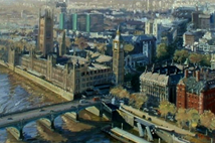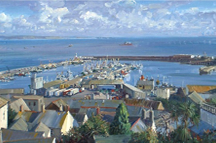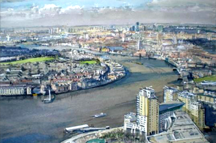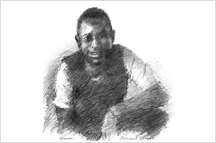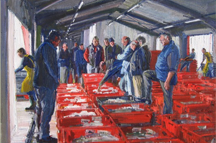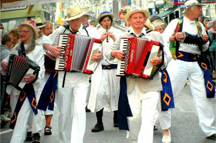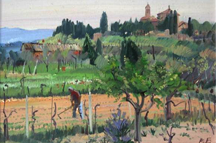

Francis Bacon's Triptych at the National Gallery of Australia shows the power of three
The power of three
Triptych (1970) by Francis Bacon. Oil on canvas, each 198cm x 147.5cm. National Gallery of Australia, Canberra Source: Supplied rancis Bacon's Triptych at the National Gallery of Australia shows the power of three
Kitty Hauser The Australian
VISITORS to Portland Art Museum in the past few weeks have been able to see the world's most expensive painting ever sold at auction. Francis Bacon's 1969 triptych Three Studies of Lucian Freud fetched a phenomenal $US142.4 million last November. The estimated price for the New York sale had been $US85m.
Even seasoned art market watchers were surprised: "This is not about collecting," one disgruntled billionaire collector told Bloomberg.com on the day after the auction. "For a moment last night, I thought I was in the commodities market." A high-powered art consultant (a growing breed in this climate) said she was "overwhelmed". The work will be on public display in Oregon until March - tax reasons make this beneficial. And after that, who knows?
The record sale of Three Studies of Lucian Freud may make visitors to the NGA pause for a moment in front of Canberra's own Bacon, Triptych (1970), which was painted at about the same time. It's arguably not one of his best, but then neither - by critical consensus - is Three Studies. By 1970, Bacon risked becoming formulaic. He was getting bored with his limpet East End lover George Dyer, whom he painted in many different positions and scenarios. In the Canberra triptych Dyer appears in a suit in the left-hand panel (he was always smartly dressed) and naked in the right-hand one. He stares into space, as he does in many of Bacon's paintings of him click for more info. A year after Triptych, Dyer died of an overdose, giving the guilt-stricken Bacon possibly his best subject. The paintings that he produced in the aftermath of the tragedy - sometimes described as the "black triptychs" - are among his most powerful.
Bacon liked to produce paintings in threes. It was a format with a long history, especially in Christian art, and it suited Bacon since, as he said, he conceived of images in series. The images are not supposed to be read sequentially, like a comic strip - they are not meant to be "read" at all. Bacon's goal was for his paintings to have a visceral rather than intellectual impact on the viewer; they are meant to "open up the valves of sensation". He worked out how to do this for himself: he never went to art school. Once he found out, he developed a tendency to repeat himself - the naked light bulb that casts a circle of coloured light, the orgasmic spurt of white paint, the ectoplasmic shadows. Even so, the paint carries its charge of human abjection in a way unmatched by any other artist. And even an average Bacon is exciting.
The recent sale of Three Studies (boosted, they say, by quantitative easing) was not the first time a Bacon painting was bought for a record price. He is clearly a favourite investment for the super rich. Interestingly, money always stuck to Bacon, himself a keen gambler. He had something of Picasso's apparently magical ability to substitute his inimitable mark-making abilities for cash, creating in effect his own currency. It's a currency that has stratospherically escalated in value. There are, after all, only 28 or so Bacon triptychs in existence. Triptych (1970) was one of the NGA's first acquisitions, and surely one of its most sensible.
Francis Bacon, Triptych (1970). National Gallery of Australia, Canberra; purchased 1973.


